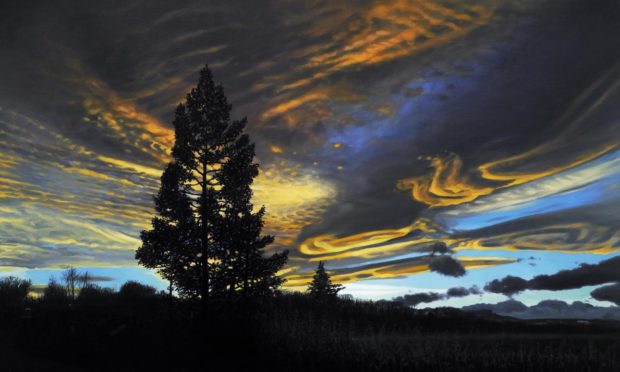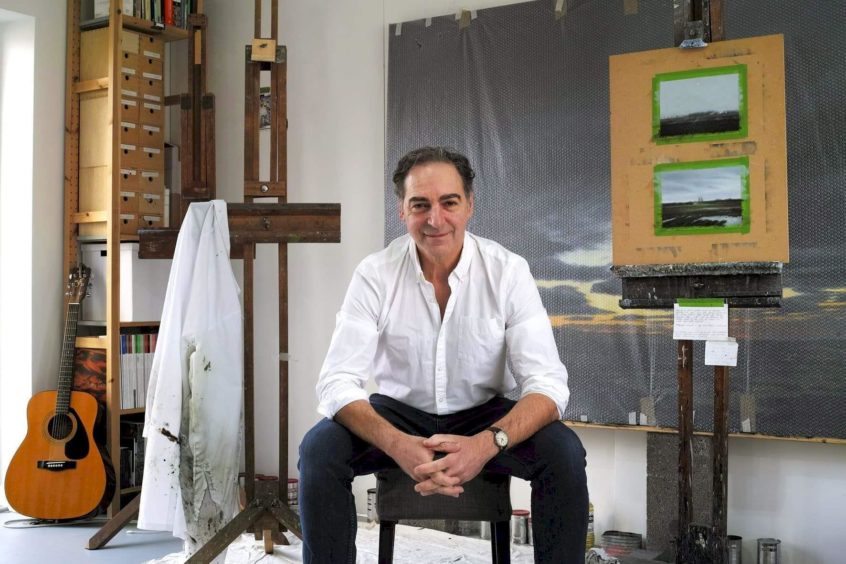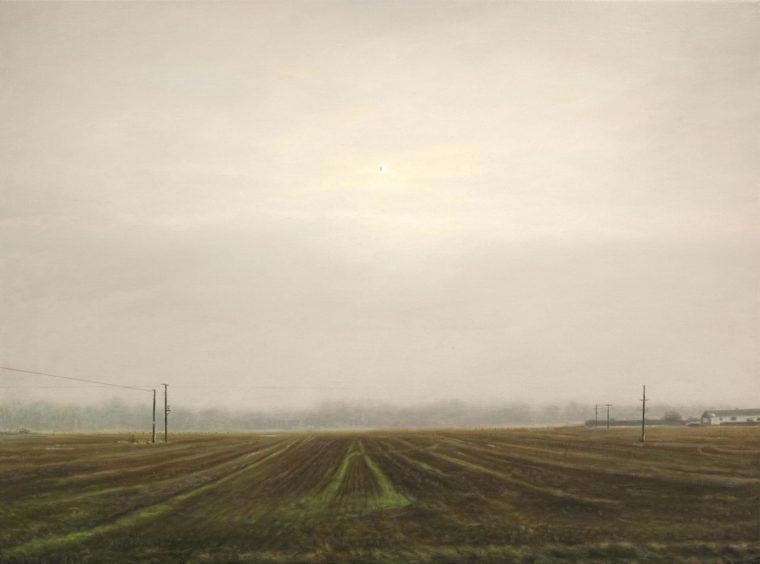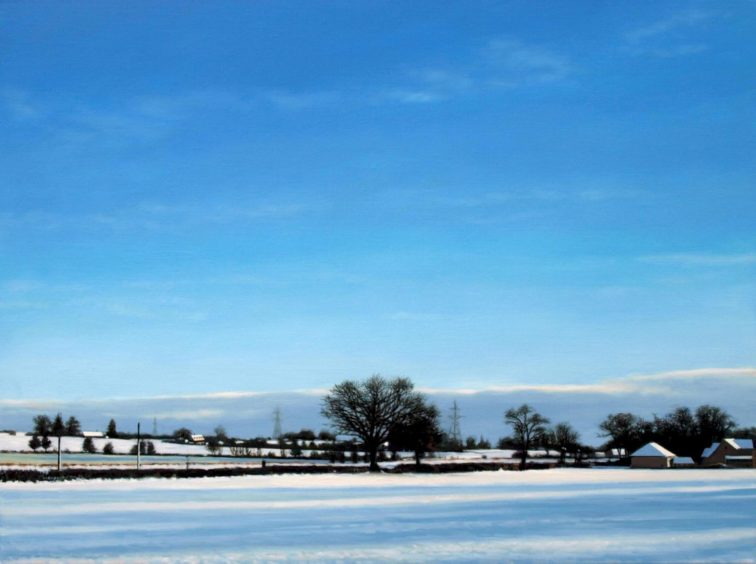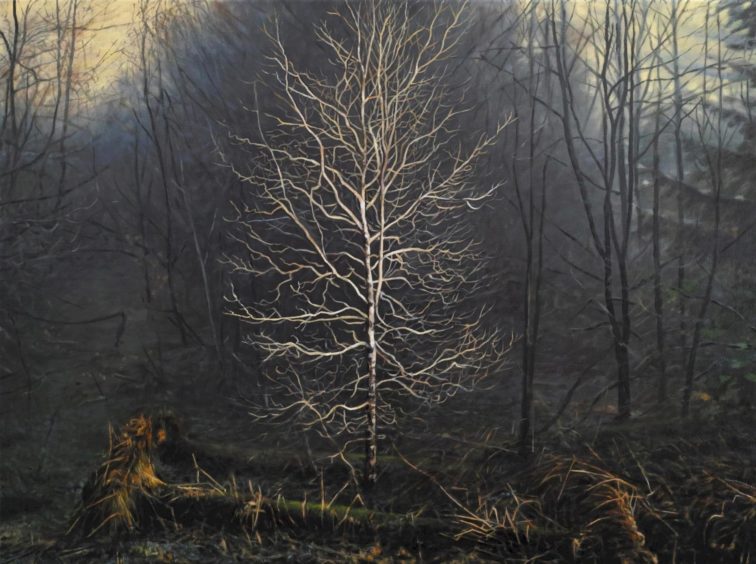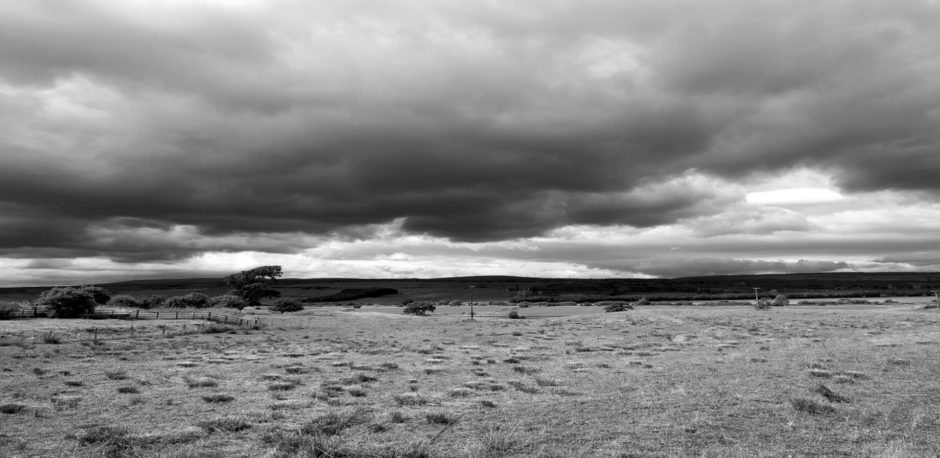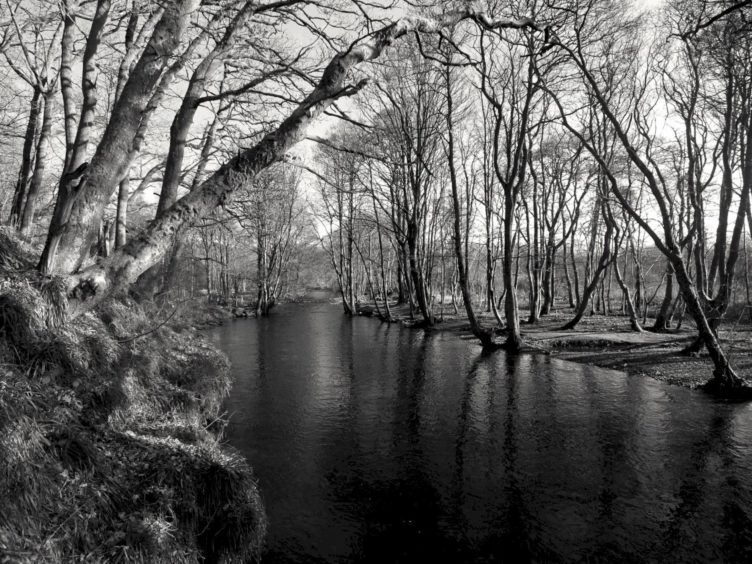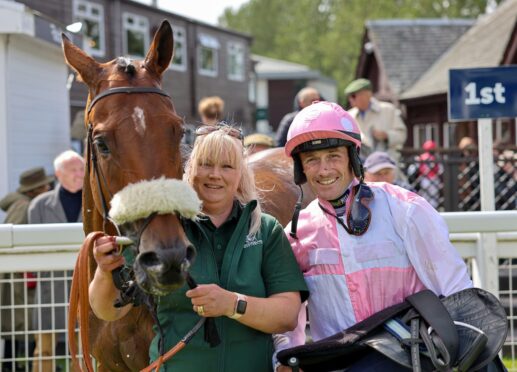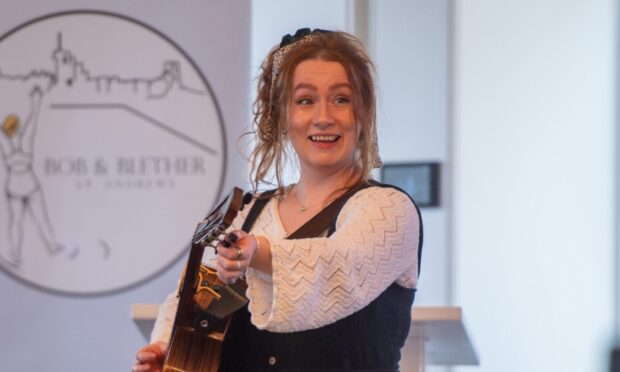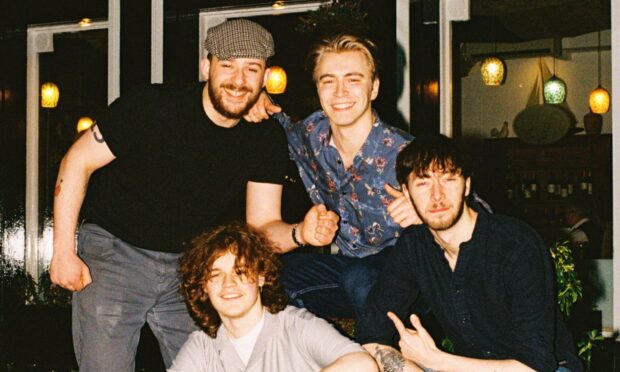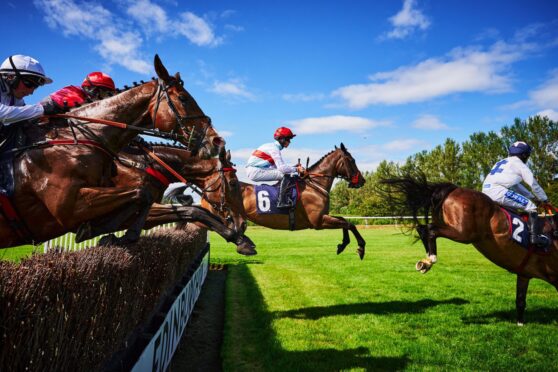For the past four decades Philip Braham has been examining the human condition through his depictions of the Scottish countryside. In recent years the Glasgow-born artist has achieved acclaim for a series of brooding landscapes that have reflected on our common mortality, with his latest body of work extending the theme to reflect emotions stirred while locked down in Perthshire from late-winter through to summer last year.
A long-time admirer of the county’s often stunning rural vistas, Philip and his family moved from Edinburgh to Crieff three years ago, partly to escape city life, but also, crucially, to enable him to immerse himself in a setting that has become central to his calling.
Strathearn figures prominently in his latest exhibition Closer To Home, which has been showing online this month via the capital’s Scottish Gallery, and he tells me the Brahams are “absolutely loving” life in the photogenic locale.
“We’ve got two quite young children, an 11-year-old and a seven-year-old, and Edinburgh was just so frantic,” says Philip, who is art and philosophy programme director at Dundee University’s Duncan of Jordanstone College.
“My wife is a primary teacher and our wee one would get dropped off to nursery and the older one to school, and she’d be desperately rushing to try and get in before her pupils arrived. I was doing a commute to Dundee and lost my studio when the whole complex got sold over to a housing development company.
“A new studio in Edinburgh would’ve been very expensive, and that’s where the notion of changing everything and having a quieter, more peaceful existence came into play. Fortunately we sold our place quickly and the whole thing went through really fast, so we were very lucky that way.”
Given its vast array of picturesque sites, it’s no real surprise that Philip describes his Perthshire patch as “absolutely ideal”.
“It has certainly made this time in lockdown easier when we’re able to get out into the hills or just walk around in the farmlands round about us,” he adds. “I’m originally from Bearsden and it’s not unlike Crieff. Where we lived was on the edge of the moors as well, so in a way it was quite an easy decision to come here, for me anyway.”
As well as the prospect of having a potential wealth of source material on his doorstep, being able to operate a home studio has also proved a major plus. “When we moved, one of the prerequisites was there would need to be a space that would be a studio, so we converted a double garage,” Philip declares.
“It’s become a creative hub for all the family. My wife’s piano is in there and the kids have got clay and cardboard and all sorts of stuff there too. It’s just a great place where we all make things.”
Closer To Home is Philip’s first major exhibition since leaving Edinburgh, his base since the early 1980s. While the collection’s moody monochrome stills take in moments across most months, his paintings disproportionately focus on winter.
The majority of its 17 oils were completed during lockdown, and Philip says certain works can be interpreted as direct responses to the unfolding crisis.
“I often have three canvasses on the go simultaneously — one nearly finished, one halfway through and one just beginning — so at the start of lockdown it didn’t change much in terms of the kind of work that I was producing,” he explains.
“My way of working is to go out with my camera and use it a bit like a notebook or a sketchbook and take in interesting parts of the landscape, but often maybe I’ll change the sky or possibly parts in the foreground.
“I’m trying to capture a certain kind of atmosphere. So although these are very recognisable landscapes, they’re as much internal as external. When I’m painting a forest, for instance, I’m thinking of all the forests that I’ve ever known, and these go back to forests around Edinburgh such as where the Battle of Pinkie took place.
“It’s to give the viewer an insight into my internal way of working. So although the external landscape triggers things, what it’s triggering inside is much more emotional in a sense. I hope that the painting is recognisable as a particular landscape but also that there’s something more to it, a kind of resonance.”
The farmland study A Partial Eclipse was inspired by a sunset viewed west of Crieff last spring. “There was no eclipse but I created the atmosphere as though it was that, and that was a response to the lockdown early on,” he says.
“The big painting which is a centrepiece to the exhibition, First Light, Torlum Hill, was when we were most of the way through the pandemic’s first wave and it looked as though we were coming out the other end.
“I set off at three in the morning in August and watched the dawn rise and took a whole lot of images from that, and then worked from the notion that this new dawn was like a beacon of hope.
“Winter Light In Torlum Wood was one of the first paintings I produced after we’d gone into full lockdown. It shows a birch tree which is highlighted by a low level ray of light and it just shines in the darkness of the woods, so again it’s a reference to the period that we’re going through and the notion that there could be some hope emerging out of the gloom.
“It seemed appropriate that it was the young tree the light was falling on.”
Another remarkable inclusion is the stunning sunset Heavenly Turbulence, an early 2020 work which the father-of-three says he now looks back on “as a harbinger for what was about to come”.
Philip insists though that readings of his work should first and foremost be seen as his viewer’s prerogative. “I don’t like to be too dogmatic about what the paintings mean,” he stresses.
“If it’s successful then people can get a feel from it without necessarily needing to know all of the background information — in a way like music does it. If you listen to a piece of music, even though you might question what it’s about, it does make you feel something.”
Working on art
The early lockdown restricted Philip’s fieldwork opportunities, but precious walks with his wife and children during that difficult period allowed him to build up his portfolio of images. “It depends on the company, but generally I much prefer to go out on my own, then I’m completely immersed in my subject,” he says.
“When I’m out for a walk with the family they put up with it! They’ll carry on walking while I get what I need to get, then I’ll gallop to catch up with them.
“I have to capture a sudden shift in light if I can because otherwise the moment’s gone. I’m not a landscape painter who can just plonk my easel in a field and start to paint, because everything is changing too fast and I can’t really compute what is going on.
“If you’re looking at the canvas and then at the sky or whatever it’s all changed. The trees and the grasses are all moving. I need that distillation and the best way for me to do it is to take photographs and then look back through them and decide what exactly the composition is going to be.
“It can sometimes be time consuming but if I’m trying to put together a composition for a painting I don’t need all the elements in one image. I use my iPad so I can just click from one picture to another changing a sky or whatever. I don’t need to have the whole thing worked out in Photoshop before I begin. There’s flexibility there.”
The Braham modus operandi
There’s an element to the Braham modus operandi of unlocking a puzzle, with new work often starting with photos retrieved from his archive and viewed with fresh eyes.
“The painting The Endless Path started up Ben Lomond when it was so foggy you couldn’t see anything except for maybe a hundred metres ahead, but that became relevant to me because I was thinking about the path of life and my father, who never knew my wife and two children,” he elaborates.
“I was reflecting back on that as well as thinking into the future. I’m 61 now and I don’t know if I’ll see my children’s children in the future. It’s that notion that we live in this little zone which is our life and both our history and our future — our children — are in the fog.
“It’s when something like that becomes relevant — but it’s only through thinking — that an image will jump out at me. My paintings are part of the Romantic tradition where the image stands for something beyond just itself.
“I don’t like the word transcendental but there is that element where — when you stand before it — you think, wow, this is definitely more than just the landscape you’re looking at.”
Philip agrees that his recent work contrasts with earlier explorations of primal fears via themes such as suicide, regret and madness. “Maybe that’s partly to do with the relocation,” he reflects.
‘I feel quite contented’
“I feel quite contented now so the paintings are quieter and more serene, I think. Nevertheless, there’s still always that shadow of how long have we got.”
Closer To Home has proved popular in recent weeks after being forced online, but like so many creatives — including his DJCAD proteges — Philip has endured lean times since Covid hit.
“I don’t think I’ve sold any work in the last year — that’s why I was so looking forward to this exhibition,” he admits.
“It’s been the same for all of my artist friends and colleagues. Some galleries have adapted well to it all but most people are just having a look online, they’re not having a conversation or thinking they might buy something.
‘A diffiicult time for everybody’
“It affected graduates last year and it looks like it’s going to affect this year’s lot as well, unfortunately. The V and A’s presence is still having an impact and the art school’s getting a lot of applicants, but it’s a difficult time for everybody.”
Looking ahead, the lecturer says a return to the real offers hope to those grappling with a pandemic in the age of artificial intelligence and super-information. “I’m interested in philosophers like Heidegger, for whom the immersion in the real world was what it was all about,” Philip declares.
“He talks about the way one carries oneself, making sure that one’s thoughtful in terms of our relationship with other people and nature. Those sorts of things have helped carry me through the pandemic. I get great pleasure just watching a furrowed field turn to something sprouting new growth. It’s just an immersion in nature really.”
* Closer To Home can be viewed at scottish-gallery.co.uk and philipbraham.com
